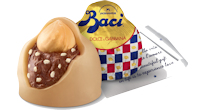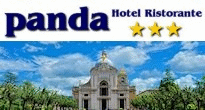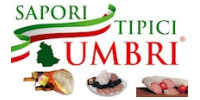Our network:
Thursday 18 December 2025
The Basilica of Santa Maria degli Angeli
Built on a grandiose scale, the Basilica di Santa Maria degli Angeli is the seventh largest Christian church. Its magnificence may be at odds with the simplicity preached by St Francis himself but the flocks of pilgrims coming to visit the primitive Porziuncola chapel and the Cappella del Transito called for a building that was able to accomodate the faithful.
The Porziuncola chapel was given to St Francis by the Benedictines, and is important because it was the initial nucleus from which the Franciscan order was born. The Cappella del Transito is the place where the saint died on October 4th 1226.
Work started on the building of the basilica under Pope Pius IV in 1569, to designs by Galeazzo Alessi. Building continued until 1667 however, when the dome completed the initial structure. The bell tower was not added until 1684 and was originally intended to have a twin tower that was never completed. In 1832 an earthquake caused the collapse of the central nave and part of the lateral nave. The facade was originally remodelled in the neo-Classical style, until 1928 when it was again re-designed in neo-Baroque style. The Fontana dei Pellegrini on the left hand exterior wall of the basilica counts 26 water spouts and was a gift of the Medicis in Florence, donated in 1610.
The interior of the basilica is divided into three naves, with a series of side chapels. A transept and a long choir with a semi-circular apse closes in the basilica at the far end. Directly under the dome of the basilica stands the Porziuncola chapel (10th-11th century).
The exterior of the chapel is decorated with 14th and 15th century frescoes by Andrea d‘Assisi, known as l‘Ingegno). A gothic tabernacle surmounts the roof of the chapel and was renovated after the 1832 earthquake. The vaulted interior contains an ancona by Ilario da Viterbo (1393) depicting the Awarding of Forgiveness.
Access to the Cappella del Transito is from the presbyterium. It contains the cell where St Francis died. The exterior has frescoes by Domenico Bruschi (1889), while the interior was decorated by Spagna (~1520). The statue of St Francis near the altar is by Andrea della Robbia, who also completed the enamelled terracotta altar back in the crypt.
The basilica is flanked by the il Thornless Rose Garden and the Cappella del Roseto, made up of three rooms. The first chamber was added by order of San Bernardino of Siena, while San Bonaventura gave orders to build the second. They are frescoed by Tiberio d‘Assisi (1505-16), who has mirrored the theme used in the decoration of San Fortunato, at Montefalco.
The Museo della Basilica is in another section of the convent. Among the most important works kept here are the "Crucifix“ painted on wood by Giunta Pisano (1236-40) and the "San Francesco“ panel painted by the Maestro di San Francesco in the second half of the 13th century.
 |
The Porziuncola chapel was given to St Francis by the Benedictines, and is important because it was the initial nucleus from which the Franciscan order was born. The Cappella del Transito is the place where the saint died on October 4th 1226.
Work started on the building of the basilica under Pope Pius IV in 1569, to designs by Galeazzo Alessi. Building continued until 1667 however, when the dome completed the initial structure. The bell tower was not added until 1684 and was originally intended to have a twin tower that was never completed. In 1832 an earthquake caused the collapse of the central nave and part of the lateral nave. The facade was originally remodelled in the neo-Classical style, until 1928 when it was again re-designed in neo-Baroque style. The Fontana dei Pellegrini on the left hand exterior wall of the basilica counts 26 water spouts and was a gift of the Medicis in Florence, donated in 1610.
The interior of the basilica is divided into three naves, with a series of side chapels. A transept and a long choir with a semi-circular apse closes in the basilica at the far end. Directly under the dome of the basilica stands the Porziuncola chapel (10th-11th century).
 |
Access to the Cappella del Transito is from the presbyterium. It contains the cell where St Francis died. The exterior has frescoes by Domenico Bruschi (1889), while the interior was decorated by Spagna (~1520). The statue of St Francis near the altar is by Andrea della Robbia, who also completed the enamelled terracotta altar back in the crypt.
The basilica is flanked by the il Thornless Rose Garden and the Cappella del Roseto, made up of three rooms. The first chamber was added by order of San Bernardino of Siena, while San Bonaventura gave orders to build the second. They are frescoed by Tiberio d‘Assisi (1505-16), who has mirrored the theme used in the decoration of San Fortunato, at Montefalco.
The Museo della Basilica is in another section of the convent. Among the most important works kept here are the "Crucifix“ painted on wood by Giunta Pisano (1236-40) and the "San Francesco“ panel painted by the Maestro di San Francesco in the second half of the 13th century.
| Up |
General information
• Assisi World Heritage • Churches
• Associations & Groups
• History
• Tourist Guides and visit guided in Umbria
• General travel tips
• Useful - emergency numbers
• Weather information
• Lyrick Theatre Assisi
• Metastasio Theatre Assisi
• Local opening times
• Churches of Assisi
Transport in town
• Streets of Assisi • Traffic restrictions
• Parking Mojano - historic centre
• Parking (others)
• Buses & Taxis
• Town map
• How to reach Assisi by car
• How to reach Assisi by Train
• How to reach Assisi by Air
Transport out of town
• Airport • Rent-a-car
• Local and national buses
Where to Stay
• Hotel Panda • Holiday Farm Colle degli Olivi
• Map of Hotels in Assisi

Where to eat and drink
• Restaurant Colle degli Olivi • Restaurants Map of Assisi area
Education
• Italian Language School for Foreigners • University
Art and monuments
• The Rocca Maggiore • Temple of Minerva
• Palazzo Capitano del Popolo
• Roman Amphitheatre
Art and religion
• Eremo delle Carceri • The Basilica of St Francis and the Sacro Convento
• The Basilica of Santa Maria degli Angeli
• The Basilica of St Claire
• Abbey of St. Pietro
• St. Damian's Convent
• St. Rufino Cathedral
• Church of Santa Maria Maggiore
• St. Francis of Assisi - 2, 3 and 4 October

News from Assisi
Sorry, non news - i soggetti interessati a far conoscere le iniziative che avranno luogo nell'ambito del territorio comunale sono invitati a darne comunicazione con congruo anticipo utilizzando l'email redazione@umbriaonline.com


What to see & do
• 4th OCTOBER, Feast of San Francesco of Assisi • Italian Language School for foreigners
• Park of Colfiorito
• Perugino exhibition and the Porziuncola chapel in Santa Maria degli Angeli - Assisi
• Golfing holidays
• Assisi Farm Stay Colle degli Olivi
• Sapori Tipici Umbri, buy now
Lake Trasimeno
• General Information Lake Trasimeno • The islands - boat tours Lake Trasimeno
• Eating well by Lake Trasimene
• Where to stay by Lake Trasimene
• Bathing - Lake Trasimeno
• Mooring Lake Trasimeno
• Navigation regulations
• Mercati Ittici
Specials - In & Out of town
• Weddings in Umbria • Wellness in Umbria - Assisi area
• Honeymooning in Umbria

Typical products
• Sapori Tipici Umbri • Norcia Ham IGP
• Mushrooms selling
• Truffles selling
• Extra Virgin Olive Oil selling
• Wine selling
Museums and galleries
• The Porziuncola Museum • Cathedral Museum and Crypt of St Rufino
• Municipal Art Gallery
• Treasure Museum & F.M. Perkins Collection
• Civic Museum & Roman Forum
Art and tourist attractions
• Forest of Saint Francis - Assisi - FAI • Along Via San Francesco
• Park of Mount Subasio
• The Calendimaggio :
the Ides of May Festivity







